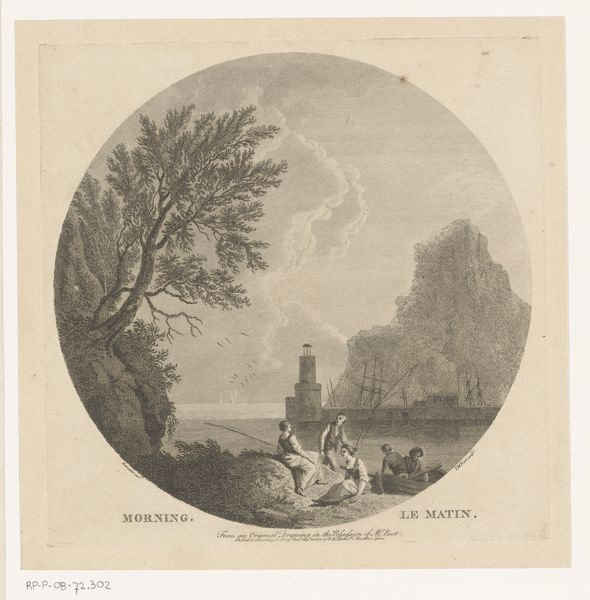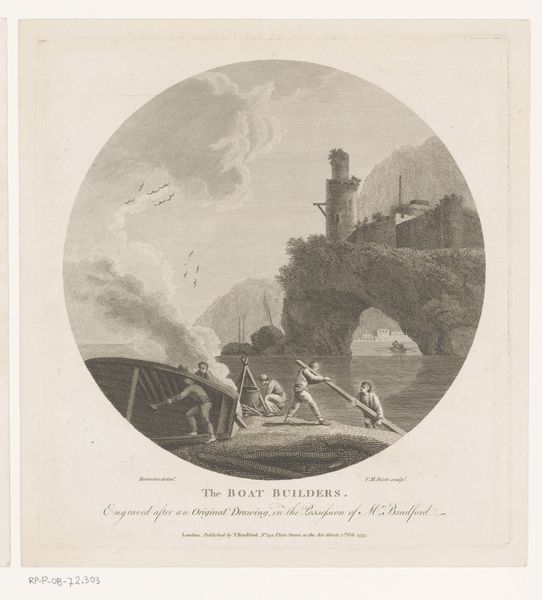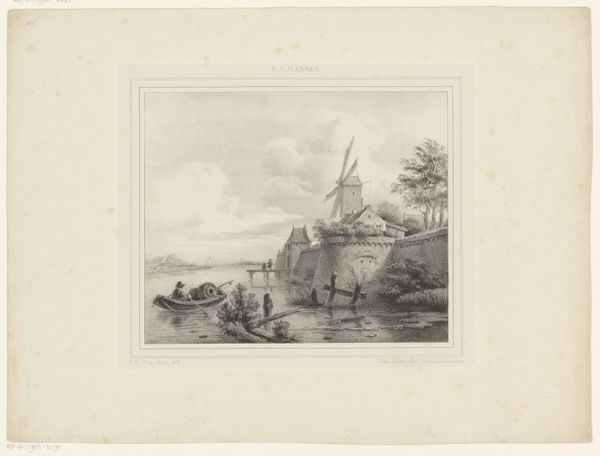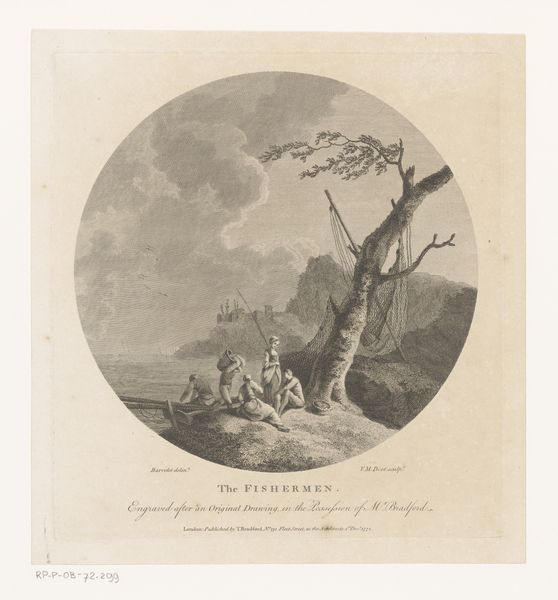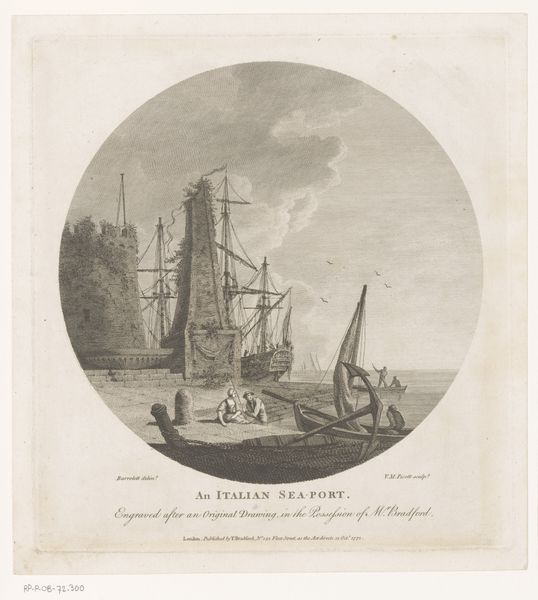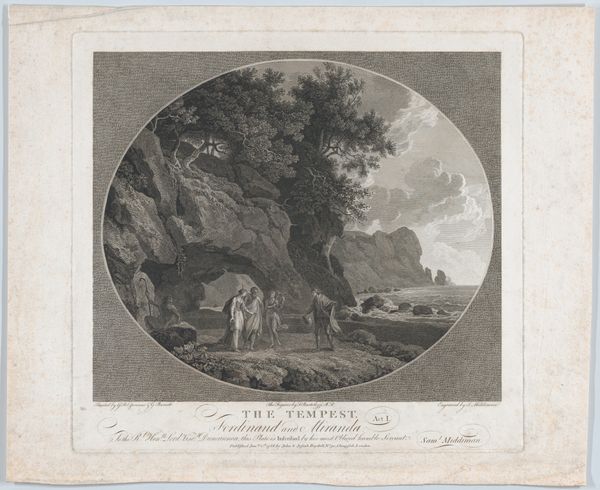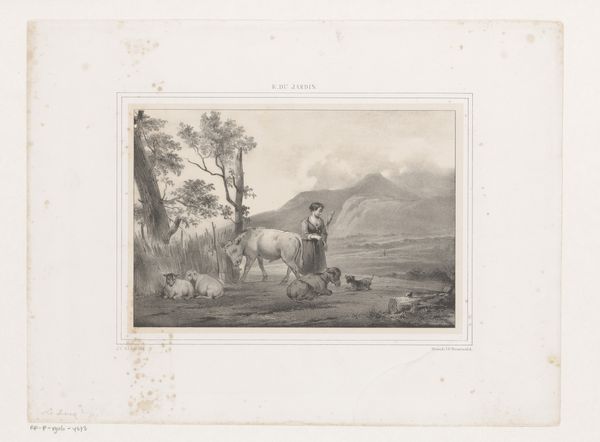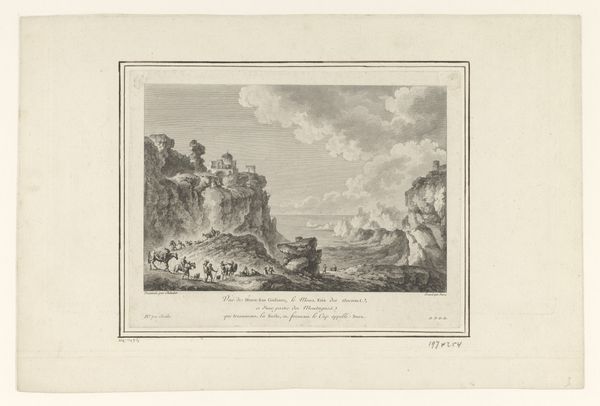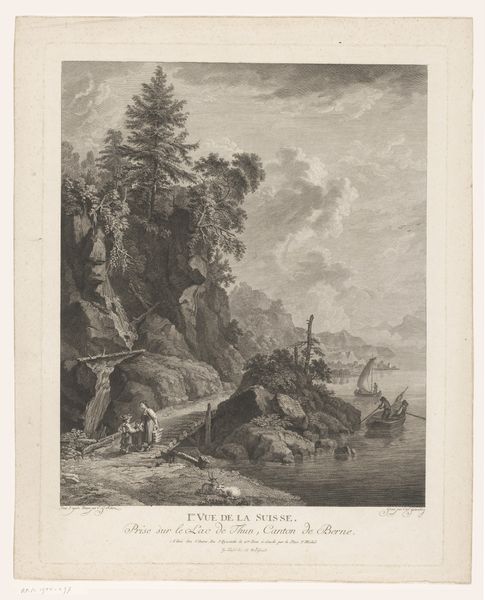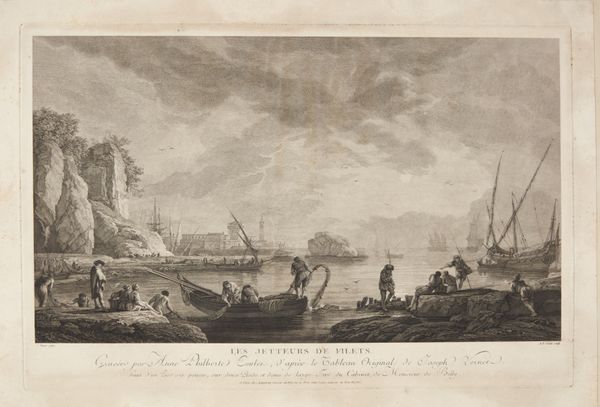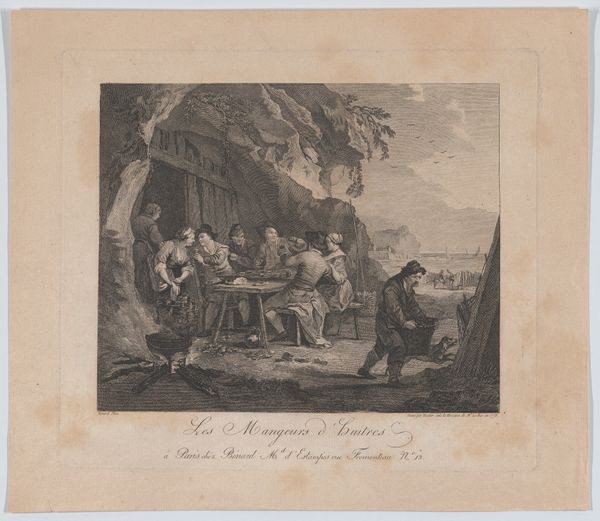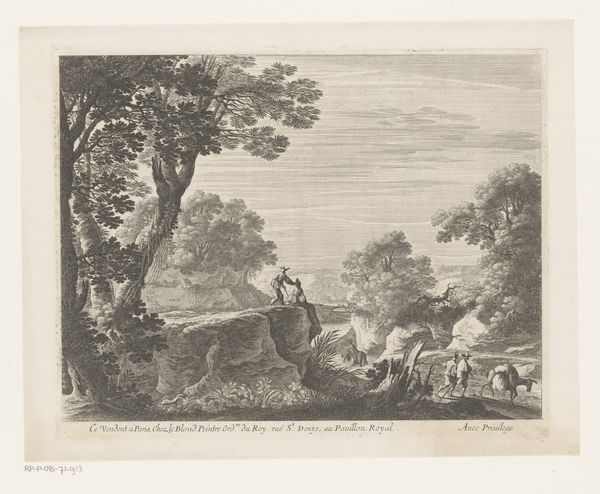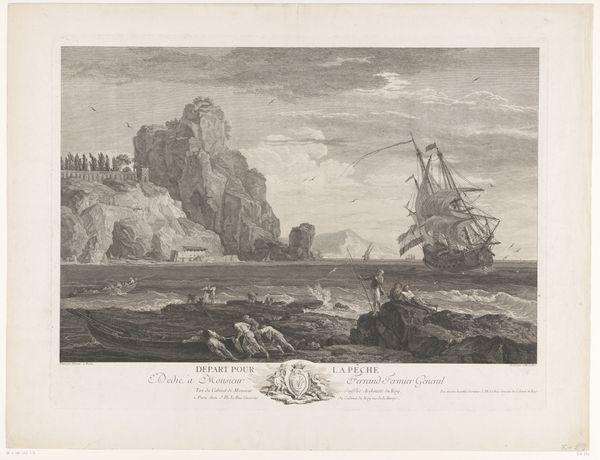
Dimensions: height 273 mm, width 252 mm
Copyright: Rijks Museum: Open Domain
Editor: So, this is "Landschap met kalme zee en vissers op een rots," or "Landscape with calm sea and fishermen on a rock," created in 1773 by Victor Marie Picot as an engraving. I find the title slightly ironic – something about the composition gives off a feeling of waiting or expectation, rather than calmness. What do you see in this piece, considered from a historical viewpoint? Curator: Well, what immediately strikes me is how this engraving participates in a rising interest in the picturesque within the late 18th-century art world. These curated visions of nature weren't just about aesthetic pleasure; they also served very specific cultural functions. Consider who might have purchased this engraving, given it's based on an original drawing "in the possession of M. Bradford." How do you think that context would affect how audiences responded to the image? Editor: Hmm, if it was owned by a wealthy individual, then perhaps it speaks to the rising merchant class and their desire to connect with nature in a way that reflected their status? Curator: Precisely! These kinds of landscape scenes, mass produced through engraving, became accessible symbols of wealth and refinement. The very act of owning and displaying such imagery became a social signifier. Consider also the emphasis on ‘calmness’ – was this merely a depiction of nature, or did it reflect deeper anxieties or aspirations of a society on the cusp of major change? What do you think that choice reflects of the social and political landscape? Editor: Maybe the image's calmness represents the idealized order and stability that the upper classes wished to project during an era of growing social and political unrest? It seems there’s a lot more beneath the surface than just a simple scene of fishermen. Curator: Absolutely. These picturesque scenes were carefully constructed narratives laden with social meaning, meant to affirm the values and worldview of a specific audience. It prompts us to think about who these images were intended for, and what kind of message they were intended to convey about the social order. Editor: I'll definitely look at landscapes differently now, considering their political context. Thank you!
Comments
No comments
Be the first to comment and join the conversation on the ultimate creative platform.
